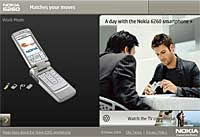 If you’ve ever wished that your answerphone message mumblings could have a bit more pizzazz, Nokia’s new 7710 handset. Xpress audio messaging could become another tool in the podcasters arsenal, enabling podcasting on the move, without a PC. It will all be down to the power of the audio editing software. We’re keen to get our hands on it to see if our hunch is confirmed.
If you’ve ever wished that your answerphone message mumblings could have a bit more pizzazz, Nokia’s new 7710 handset. Xpress audio messaging could become another tool in the podcasters arsenal, enabling podcasting on the move, without a PC. It will all be down to the power of the audio editing software. We’re keen to get our hands on it to see if our hunch is confirmed.
For the straight messaging, Nokia clearly hopes that this will give them some leverage in the highly competitive – and lucrative – youth mobile phone market:
“Nokia Xpress audio messaging enables operators to differentiate their service offering from competitors, by utilizing existing infrastructure,” explains Juha Pinomaa, Vice President, Mobile Phones, Nokia.
“For consumers, Nokia Xpress audio messaging combines ease of use, affordability, and adds a personal touch to greetings, congratulations, or allows to share a special moment like a grandchild’s first words.”
Recorded audio messages can be sent to all MMS-enabled GSM handsets and stored and replayed as easily as any other multimedia file, and Nokia will be introducing support for legacy phones within its MMS solution.
The Nokia Multimedia Application Gateway will also enable sending audio messages to phones that do not support MMS, therefore letting even more people hear your pre-recorded masterpieces.
Nokia is so far, the only MMS infrastructure provider to offer legacy support specifically designed for audio messaging. The new audio messaging menu will be integrated in several Nokia handsets introduced in 2005.
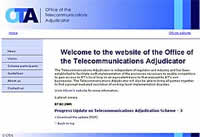 The Independent Office of the Telecoms Adjudicator (OTA) has issued an update on their progress of ‘local loop unbundling’ (LLU – the process of opening BT’s exchanges to competitors).
The Independent Office of the Telecoms Adjudicator (OTA) has issued an update on their progress of ‘local loop unbundling’ (LLU – the process of opening BT’s exchanges to competitors).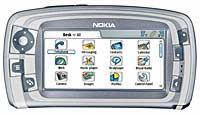 Nokia’s hotly awaited new multimedia smartphone, the
Nokia’s hotly awaited new multimedia smartphone, the  Depending on the sales package, some mobile media applications and services will be pre-installed on the 128 MB MMC, including Mobipocket Reader. This e-book reading application, already popular on Palm/Pocket PC platforms, gives the user access to thousands of titles including current bestsellers.
Depending on the sales package, some mobile media applications and services will be pre-installed on the 128 MB MMC, including Mobipocket Reader. This e-book reading application, already popular on Palm/Pocket PC platforms, gives the user access to thousands of titles including current bestsellers.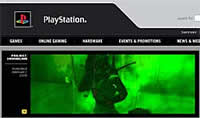 The details of the Cell processor chip designed to power
The details of the Cell processor chip designed to power  The Cell’s architecture is described as scalable from “small consumer devices to massive supercomputers” and when installed inside powerful computer servers, is expected to be capable of handling a breathtaking 16 trillion floating point operations, or calculations, every second. Phew!
The Cell’s architecture is described as scalable from “small consumer devices to massive supercomputers” and when installed inside powerful computer servers, is expected to be capable of handling a breathtaking 16 trillion floating point operations, or calculations, every second. Phew! Games console maker
Games console maker  The same technology has also been employed by Nintendo to protect game demos that are issued on a trial basis for play in retail stores and other demo environments.
The same technology has also been employed by Nintendo to protect game demos that are issued on a trial basis for play in retail stores and other demo environments. The anticipation around the release of Gran Turismo 4 has been, to put it mildly, huge. Sony are hoping this Playstation2 only game will be their Halo2 type blockbuster.
The anticipation around the release of Gran Turismo 4 has been, to put it mildly, huge. Sony are hoping this Playstation2 only game will be their Halo2 type blockbuster. After receiving a sound pummelling in previous rounds against the mighty Google, Microsoft has produced a leaner, meaner more bad-ass search engine – and this one looks like it might go the distance.
After receiving a sound pummelling in previous rounds against the mighty Google, Microsoft has produced a leaner, meaner more bad-ass search engine – and this one looks like it might go the distance.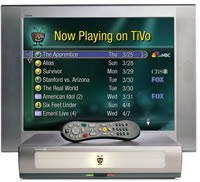 Squeezed on both sides by ever-competitive satellite and cable providers, TiVo is trying to woo third party developers into creating compelling new add-on services for their product.
Squeezed on both sides by ever-competitive satellite and cable providers, TiVo is trying to woo third party developers into creating compelling new add-on services for their product. A $100 (€76, £53) laptop computer for the developing world has been touted at the World Economic Forum in Davos by Nicholas Negroponte, founding chairman of MIT’s Media Lab.
A $100 (€76, £53) laptop computer for the developing world has been touted at the World Economic Forum in Davos by Nicholas Negroponte, founding chairman of MIT’s Media Lab.